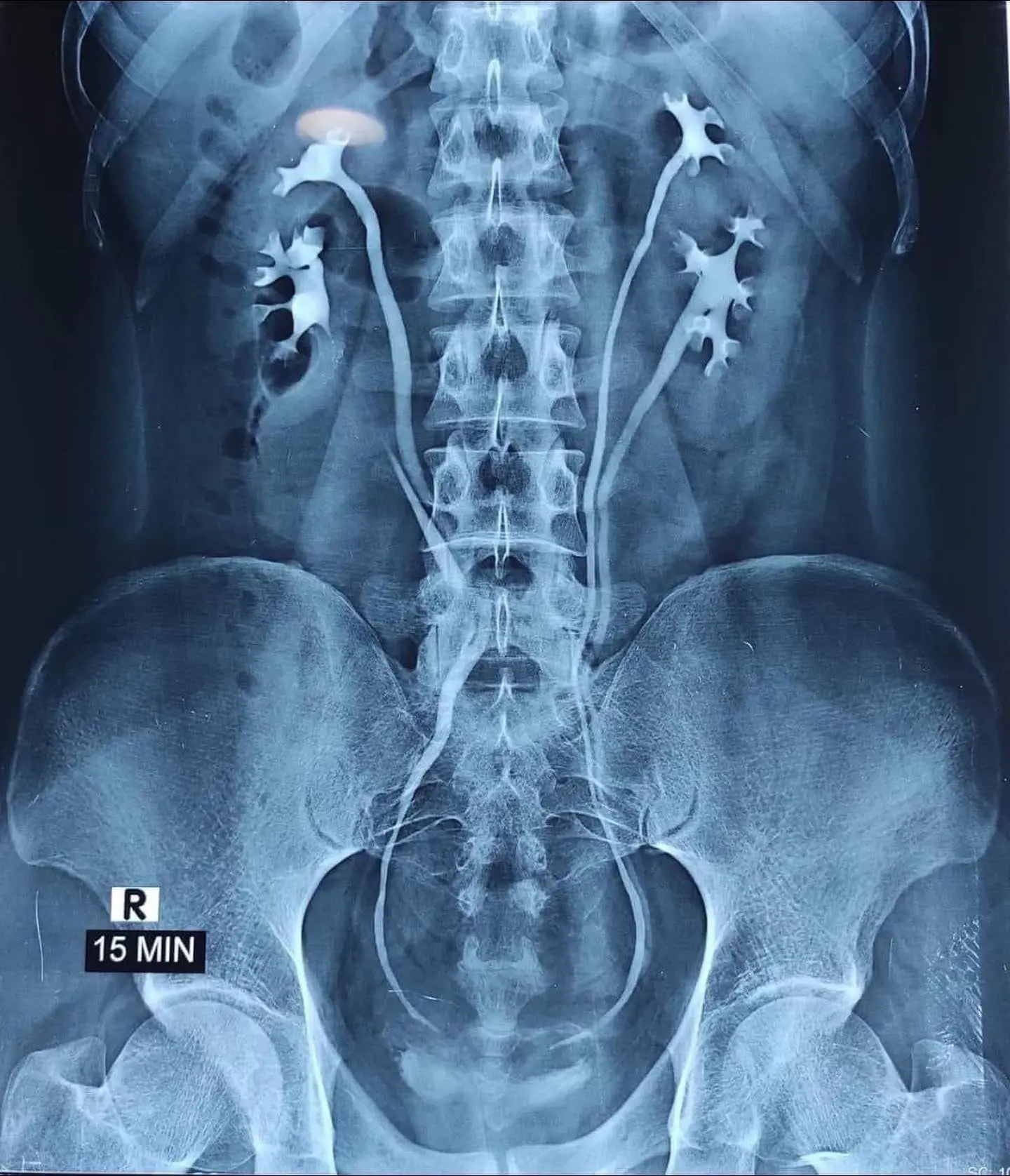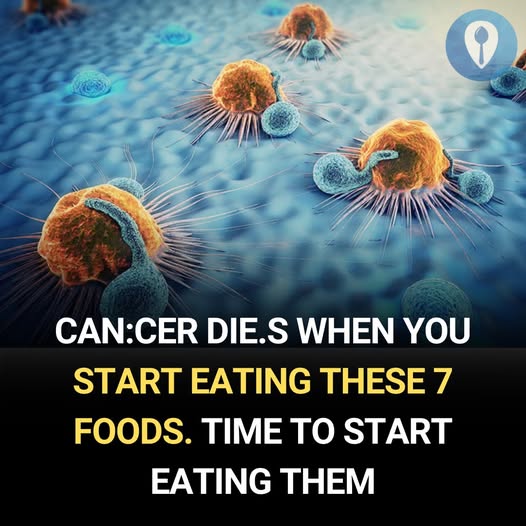20+ Weird Signs That Lead To a Cancer Diagnosis
A cancer diagnosis is a scary thing. One day your life is going along normally, then suddenly everything changes. The earlier you get diagnosed, the better off you will be. These people share the weirdest signs that tipped them off to visit the doctor

20 Unusual Signs That Could Indicate Cancer – Don’t Ignore These Symptoms!
Cancer is one of the most dangerous diseases, and what makes it even scarier is that its early symptoms can often be subtle and easily overlooked. Sometimes, the body gives strange signals that we wouldn’t normally associate with cancer. Below are 20 unusual warning signs that you should pay attention to, as they could lead to a cancer diagnosis.
1. Unexplained Weight Loss
If you’re losing weight without changing your diet or exercise routine, this could be a sign of stomach cancer, pancreatic cancer, or other malignancies. Rapid weight loss often indicates that the body is fighting an internal illness.
2. Persistent Itchy Skin
Certain types of cancer, such as liver cancer and lymphoma, can cause chronic itching due to immune system changes and the buildup of toxins in the body.
3. Persistent Cough Without a Known Cause
A chronic cough lasting for several weeks, especially if not related to a cold, allergies, or respiratory infection, could be an early sign of lung cancer.
4. Frequent Indigestion and Bloating
If you often feel bloated or suffer from prolonged indigestion, this could be linked to stomach cancer or ovarian cancer. Many people dismiss these symptoms as minor digestive issues, but if they persist, they should be checked by a doctor.
5. Excessive Night Sweats
Waking up drenched in sweat could be a sign of hormonal imbalances caused by lymphoma or leukemia. While menopause and infections can also cause night sweats, persistent sweating with no clear reason should not be ignored.
6. Changes in Your Fingernails
- Pale or bluish nails may indicate lung cancer.
- Dark vertical streaks or brown spots under the nails could be a warning sign of skin cancer (melanoma).
- Brittle nails that easily break could be linked to anemia caused by underlying cancers.
7. Lower Back Pain That Won’t Go Away
If you haven’t injured yourself but suffer from persistent lower back pain, it could be related to pancreatic cancer, ovarian cancer, or bone cancer.
8. Swollen or Puffy Face
A swollen face, especially in the morning, can be caused by lung cancer blocking blood flow from the veins in the upper body, leading to fluid retention.
9. Chronic Bad Breath
If you have persistent bad breath despite maintaining good oral hygiene, this could be a sign of oral cancer, esophageal cancer, or stomach cancer.
10. Frequent Constipation or Diarrhea
Long-term changes in bowel habits, such as chronic constipation, frequent diarrhea, or alternating between the two, could signal colorectal cancer.
11. Persistent Headaches
If you experience frequent, severe headaches that don’t respond to usual treatments, this could be a symptom of a brain tumor.
12. Unexplained Bleeding
- Vaginal bleeding outside of regular periods could indicate cervical or endometrial cancer.
- Blood in stool or urine could be a sign of colorectal cancer or bladder cancer.
- Coughing up blood may point to lung cancer.
13. Changes in Voice
If your voice becomes hoarse or raspy for more than two weeks, it may indicate throat cancer or laryngeal cancer.
14. Painless Lumps in the Neck, Armpits, or Groin
Swollen lymph nodes that do not go away could indicate lymphoma or leukemia.
15. Feeling Full Quickly After Eating
If you experience early satiety (feeling full after eating very little), it could be a sign of ovarian cancer or stomach cancer.
16. Chest Pain That Is Not Heart-Related
Not all chest pain is caused by heart disease. Pain that radiates to the shoulders and arms could be an early sign of lung cancer.
17. Changes in Moles or Skin Patches
- Moles that grow, change shape, or bleed could indicate melanoma (skin cancer).
- Scaly patches or sores that don’t heal might be early-stage skin cancer.
18. Pelvic or Lower Abdominal Pain
If you experience frequent pelvic or lower abdominal pain, it could be a warning sign of ovarian cancer or endometrial cancer.
19. Easy Bruising
If you find unexplained bruises on your body, especially on your arms and legs, it could be a symptom of leukemia or a blood-related cancer.
20. Extreme Fatigue Without a Clear Cause
If you constantly feel exhausted despite getting enough rest, it could indicate blood cancer (leukemia), liver cancer, or colon cancer. Cancer-related fatigue is persistent and does not improve with rest.
What Should You Do If You Notice These Symptoms?
If you experience any of these symptoms for more than two weeks, don’t ignore them! Early detection is key to successful cancer treatment. Here’s what you should do:
✅ Consult a doctor – If you experience unusual symptoms, seek medical advice and get the necessary screenings.
✅ Monitor your body – Keep track of any persistent changes in your health.
✅ Live a healthy lifestyle – Maintain a balanced diet, exercise regularly, and avoid smoking and excessive alcohol consumption.
⚠ Cancer is treatable if detected early. Pay attention to your body, schedule regular health check-ups, and take preventive steps to protect yourself and your loved ones. 💙
Kidney Stones: Why Do They Form and How to Prevent Them?

Kidney stones—also known as renal calculi or nephrolithiasis—are a common health issue that affects millions of people worldwide. The formation of these solid deposits is influenced by various genetic and environmental factors and can lead to serious complications if not diagnosed and treated in time. Below, we explore the causes, formation mechanisms, and key prevention strategies to keep kidney stones at bay.
What Are Kidney Stones?
Kidney stones are solid accumulations that form in the urinary tract from minerals and salts present in urine. Their composition can vary, but most stones consist of calcium (in the form of oxalate or phosphate), uric acid, or struvite. In rarer cases, they may also be composed of cystine or other mineral combinations.
Although many people consider kidney stones an isolated issue, they actually represent a complex pathological process that can recur and cause significant complications, such as urinary infections, obstructions, or kidney damage. Epidemiological studies indicate that kidney stone prevalence has increased in recent decades, likely due to changes in diet and an aging population.
Causes and Risk Factors
The formation of kidney stones results from a combination of factors:
1. Diet and Lifestyle
- A high intake of sodium, animal proteins, and processed foods can increase the excretion of calcium, oxalate, and phosphate, promoting stone formation.
- Insufficient water intake and a sedentary lifestyle are associated with a higher risk of kidney stones.
2. Genetics
- Certain hereditary disorders, such as primary hyperoxaluria and cystinuria, can predispose individuals to kidney stone formation.
3. Systemic Diseases
- Conditions like hyperparathyroidism, obesity, type 2 diabetes, and chronic kidney disease can lead to metabolic imbalances, increasing the concentration of stone-forming substances in urine.
4. Urinary Tract Infections
- Some urease-producing bacteria can promote the formation of struvite stones (magnesium ammonium phosphate), which can grow large and obstruct urinary flow.
5. Medications
- Certain drugs, including some diuretics and calcium supplements, can alter urine pH or increase the excretion of substances that crystallize, leading to stone formation.
How Do Kidney Stones Form?
The formation of kidney stones occurs through a process known as crystallization, which depends on the balance between promoting and inhibitory factors. When the urine becomes oversaturated with compounds such as calcium oxalate, molecules cluster together to form crystals, initiating the nucleation process.
Once these crystals form, they can grow and aggregate, eventually developing into larger stones. If these stones reach a significant size, they can block urine flow, causing severe pain, inflammation, and even kidney damage.
Symptoms of Kidney Stones
Although some kidney stones may pass without causing symptoms, larger stones can trigger intense pain and discomfort, including:
- Severe lower back or abdominal pain (commonly known as renal colic)
- Blood in the urine (hematuria)
- Frequent urge to urinate
- Painful urination
- Nausea and vomiting
- Fever and chills (if an infection is present)
These symptoms should never be ignored, as untreated kidney stones can lead to serious complications such as urinary blockages and kidney infections.
Prevention: How to Reduce the Risk of Kidney Stones
The good news is that kidney stones are preventable with simple dietary and lifestyle adjustments. Here are some of the best ways to lower your risk:
✅ Increase Water Intake
- Drinking at least 2-3 liters of water per day helps dilute urine and prevent the accumulation of minerals that form stones.
- Citrus juices (like lemon juice) contain citrate, which inhibits stone formation.
✅ Maintain a Balanced Diet
- Reduce sodium intake: Excess salt increases calcium excretion in urine, raising the risk of stone formation.
- Limit animal protein: Too much red meat and poultry can increase uric acid levels.
- Eat calcium-rich foods (but avoid excessive supplements): Getting calcium from natural sources like dairy and leafy greens helps prevent oxalate absorption in the intestines.
- Consume oxalate-rich foods in moderation: Spinach, nuts, and chocolate contain oxalates, which can contribute to stone formation.
✅ Stay Active
- Regular physical activity helps maintain a healthy weight and improves metabolic balance, reducing kidney stone risk.
✅ Monitor Your Health
- If you have a family history of kidney stones or conditions like diabetes or high blood pressure, consult your doctor about ways to minimize risks.
- Routine urine and blood tests can help detect abnormalities before kidney stones develop.
Final Thoughts
Kidney stones are a common yet preventable condition. Understanding what causes them and how to prevent them is key to maintaining good kidney health. By making small but impactful lifestyle changes, such as staying hydrated, eating a balanced diet, and exercising regularly, you can significantly lower your risk.
If you experience severe pain, persistent urinary symptoms, or a history of recurrent kidney stones, seek medical attention immediately to prevent complications.
How Do Kidney Stones Form?
1. Urine Supersaturation
When the urine contains high concentrations of oxalate, calcium, phosphate, or uric acid, it creates the perfect conditions for crystal formation. This supersaturation is often caused by:
✅ Low fluid intake, leading to highly concentrated urine
✅ High consumption of sodium, animal protein, and processed foods
✅ Metabolic imbalances, such as hyperparathyroidism or diabetes
2. Crystal Retention and Growth
Once crystals form in the kidney, they may attach to the renal tubules or urinary tract lining, promoting further growth. Two key structures involved in stone formation include:
🔹 Randall’s plaques – Calcium phosphate deposits in the kidney tissue that serve as a foundation for stone development.
🔹 Intratubular plugs – Crystal accumulations within kidney tubules that contribute to stone formation.
3. Imbalance of Inhibitors
Under normal conditions, urine contains natural inhibitors such as citrate, magnesium, and certain proteins, which prevent crystal formation. When these protective substances are reduced due to dietary or metabolic issues, the risk of kidney stones increases.
Symptoms and Complications of Kidney Stones
The severity of symptoms depends on the size, location, and type of kidney stone. Some of the most common signs include:
🚨 Intense Pain (Renal Colic)
🔺 Sharp, excruciating pain in the lower back, abdomen, or groin as the stone moves through the ureter
🔺 Pain may come in waves and worsen over time
🚨 Blood in the Urine (Hematuria)
🔺 Pink, red, or brown-colored urine due to irritation of the urinary tract
🔺 May be microscopic or visible to the naked eye
🚨 Nausea and Vomiting
🔺 Often accompanies severe pain
🔺 Caused by nerve connections between the kidneys and gastrointestinal tract
🚨 Frequent Urination and Burning Sensation
🔺 Stones near the bladder can cause urgency to urinate and painful urination
🔺 Can be mistaken for a urinary tract infection
🚨 Recurrent Urinary Tract Infections (UTIs)
🔺 Some stones, particularly struvite stones, are associated with bacterial infections
🔺 Chronic UTIs can further promote kidney stone formation
🚨 Potential Kidney Damage
🔺 Large stones may obstruct urine flow, causing kidney swelling (hydronephrosis)
🔺 Severe cases can result in permanent kidney damage or chronic kidney disease
Prevention Strategies: How to Reduce Kidney Stone Risk
If you’ve had kidney stones before, or are at high risk, these lifestyle adjustments can help prevent recurrence:
💧 Stay Hydrated
✅ Drink 2-3 liters of water daily to dilute urine and flush out minerals before they form stones
✅ Monitor urine color – Pale yellow urine indicates good hydration
🥗 Maintain a Balanced Diet
✅ Limit sodium intake – High sodium levels increase calcium excretion in urine
✅ Reduce animal protein – Red meat and poultry raise uric acid levels, contributing to stone formation
✅ Moderate oxalate-rich foods – Spinach, chocolate, and nuts contain oxalates, which bind to calcium in the urine
⚖️ Manage Metabolic Conditions
✅ People with diabetes, obesity, or hyperparathyroidism should monitor their health closely
✅ Maintaining a healthy weight reduces the risk of stone formation
💊 Use Supplements and Medications with Caution
✅ Calcium and Vitamin D supplements should be taken under medical supervision
✅ Thiazide diuretics can reduce calcium excretion and help prevent stones in some individuals
🧪 Adjust Urine pH for Uric Acid Stones
✅ Potassium citrate supplements can help alkalinize urine and prevent uric acid stones
✅ Dietary modifications, such as increasing fruit and vegetable intake, can naturally balance urine pH
🔍 Regular Health Monitoring
✅ Urine and blood tests can detect abnormal mineral levels before stones form
✅ Ultrasound or CT scans help identify small stones before they cause complications
Final Thoughts: Take Control of Your Kidney Health
Kidney stones are not just a temporary inconvenience—they can lead to chronic kidney disease and long-term health issues if not managed properly. The good news is that prevention is entirely possible with a few simple lifestyle adjustments:
💧 Drink enough water
🥗 Eat a balanced diet
⚖️ Manage underlying health conditions
🩺 Get regular check-ups
By understanding the mechanisms of kidney stone formation and implementing evidence-based prevention strategies, you can protect your kidney health and avoid the painful consequences of kidney stones.
🚨 Listen to your body—if you experience persistent pain, changes in urination, or recurring kidney stones, seek medical attention immediately. 🚨
🔹 Your health is in your hands! Take action today to support your kidneys and overall well-being. 💙
Revolutionary HIV Treatment: Lenacapavir Achieves 100% Clinical Efficacy

In 2024, the journal Science recognized Lenacapavir as the “Breakthrough of the Year”, marking a transformative milestone in the fight against HIV. This innovative injectable drug has demonstrated unprecedented effectiveness in preventing HIV infection, providing six months of protection with a single injection. Its potential to significantly reduce global infection rates offers new hope for individuals and communities affected by the virus.
How Does Lenacapavir Work?
Unlike other HIV treatments, Lenacapavir targets the HIV capsid, a conical structure that protects the virus’s genetic material. The drug reinforces the capsid, disrupting crucial processes such as viral replication and nuclear integration in infected cells. This unique mechanism effectively blocks the virus from multiplying, marking a groundbreaking shift in HIV prevention strategies.
Lenacapavir Dosage Frequency
Currently, Lenacapavir requires just two injections per year to maintain effective pre-exposure prophylaxis (PrEP). This biannual dosing schedule represents a major improvement in convenience compared to daily oral medications or bimonthly injections.
The manufacturer, Gilead Sciences, is actively researching ways to extend the drug’s duration to a full year per dose, though this remains in the experimental phase.
Clinical Trial Success
Two landmark clinical trials in 2024 highlighted Lenacapavir’s effectiveness:
- Study on Women and Adolescents in Africa:
- Conducted in South Africa and Uganda, involving over 5,000 transgender participants.
- Zero cases of HIV infection were reported among those receiving Lenacapavir, achieving a 100% success rate.
- Multinational Study:
- Over 2,000 participants of various genders from South America, Asia, Africa, and the U.S.
- Achieved a 99.9% success rate, with only two cases of infection recorded.
In the PURPOSE-2 trial (2024), Lenacapavir reduced HIV risk by 96% when administered every six months. Among 2,180 participants, only two infections occurred, compared to nine infections in the 1,087 participants taking daily oral PrEP (Tenofovir/Emtricitabine).
Health experts describe these results as “unprecedented”, solidifying Lenacapavir as one of the most promising HIV prevention tools available.
How Lenacapavir Compares to Other Treatments
- Fewer Doses Required: Traditional PrEP requires daily pills, while injectable PrEP is taken every two months—Lenacapavir reduces this to just two injections per year.
- Higher Efficacy: Clinical trials indicate Lenacapavir is significantly more effective, particularly among high-risk populations.
- Innovative Approach: This breakthrough may pave the way for similar treatments targeting other viral diseases.
Challenges to Overcome
Despite its groundbreaking success, Lenacapavir faces several hurdles before it can become a global solution:
- Cost and Accessibility:
- Agreements have been made to manufacture generic versions in 120 developing nations.
- However, pricing and distribution remain unclear in middle-income countries like Brazil.
- Healthcare Infrastructure:
- In regions with limited healthcare access, distributing injectable treatments may pose logistical challenges.
- Social Acceptance:
- The stigma surrounding HIV and its treatment may discourage individuals from adopting this preventive solution.
Lenacapavir and the Future of HIV Prevention
While Lenacapavir marks a revolutionary step forward, it does not replace the need for an HIV vaccine. A vaccine would provide long-term protection for everyone, regardless of risk factors. However, until that becomes a reality, Lenacapavir has the potential to save millions of lives by dramatically reducing HIV transmission rates worldwide.
WHO’s Perspective
The World Health Organization (WHO) has enthusiastically welcomed the clinical trial results, emphasizing Lenacapavir’s high effectiveness in preventing HIV, particularly among women and adolescents in Africa. WHO is actively developing guidelines to facilitate the global rollout of this treatment in public health programs.
Conclusion
Lenacapavir is not just a medical breakthrough—it represents new hope for those at high risk of HIV infection. Its exceptional efficacy, combined with the convenience of two injections per year, makes it a game-changer in the fight against the HIV epidemic. However, to fully realize its potential, global efforts must focus on ensuring accessibility, overcoming distribution challenges, and breaking down social stigmas.
This remarkable innovation brings us one step closer to a future without HIV.
What Does It Mean When You Dream About Someone Close Who’s Died?

Dreams are a fascinating gateway into our subconscious, allowing us to process emotions, solve problems, and even revisit memories. It’s no surprise that sometimes, a loved one who has passed away may appear in our dreams. But is there a deeper meaning behind these encounters? Experts suggest that dreams about deceased loved ones are more than just random occurrences – they may be a crucial part of our emotional processing and healing.
The Psychological Purpose of Dreams
Dreams are often the brain’s way of sorting through daily experiences, emotions, and unresolved thoughts. When it comes to loved ones who have passed away, dreaming about them can be the mind’s attempt to cope with grief, seek closure, or simply hold on to cherished memories.
1. Dreams Help Us Process Grief
Grief doesn’t follow a straight path. It’s a wave that comes and goes, often hitting us when we least expect it. Studies show that dreaming about a deceased loved one is a normal part of the grieving process. In fact, research suggests that over half of people who lose a loved one experience these dreams.
🔹 Why it happens: The brain is trying to process the loss and reach a state of emotional acceptance.
🔹 How it feels: Some people describe these dreams as comforting, while others may find them unsettling, especially if the dream highlights unfinished business or unresolved emotions.
Common Reasons We Dream About Lost Loved Ones
While grief is a major factor, there are other subconscious reasons why someone you love might appear in your dreams.
2. Seeking Understanding
Losing someone can feel senseless, especially when it happens unexpectedly. Dreams may be the brain’s way of trying to make sense of what happened. According to grief counselors, these dreams help the mind piece together emotions that may not have been fully processed while awake.
3. A Desire to Reconnect
Sometimes, we dream about loved ones simply because we miss them. These dreams often occur in familiar settings, making it feel as though the person is still alive. Experts believe this reflects a deep desire to reconnect with them on an emotional level.
4. Delivering a Message – Or Not?
Many believe that deceased loved ones visit us in dreams to deliver messages. However, psychologists suggest that these “messages” may actually be our own subconscious thoughts coming to the surface.
🔹 Example: If a loved one gives advice in a dream, it may actually be your own inner voice seeking guidance, using their memory as a familiar and comforting figure.
Dreams Can Reveal Unresolved Feelings
5. Addressing Guilt, Regret, or Unspoken Words
If your dream about a loved one is distressing—perhaps they seem upset or distant—it might reflect unresolved guilt, sadness, or regret.
🔹 Example: If you never had the chance to say goodbye, your subconscious might create a dream where you can have that final conversation.
6. Memory Recollection
Some dreams are simply a replay of old memories. According to experts, these types of dreams often occur when the brain is sorting through past experiences and emotions. They may not have any specific meaning other than revisiting important moments from your life.
Dream Interpretation – Science or Speculation?
Dream interpretation has fascinated humanity for centuries. Ancient Greek physician Hippocrates believed dreams could reveal medical conditions, while Sigmund Freud and Carl Jung saw them as windows into hidden desires and conflicts.
While modern psychology acknowledges the therapeutic nature of dreams, it’s important to remember that dream meanings are highly personal and not an exact science.
🔹 What one person sees as a sign could simply be their mind making sense of emotions in a way that feels natural to them.
How Dreams Help Us Heal
7. The Waves of Grief
Grief doesn’t come in linear “stages.” Instead, it ebbs and flows. You might think you’ve moved on, only to have a dream bring everything back to the surface. This is completely normal and often signals deeper emotions that still need to be processed.
The Five Stages of Grief (Dr. Elisabeth Kübler-Ross, 1969)
✔ Denial – “This isn’t happening.”
✔ Anger – “Why did this happen?”
✔ Bargaining – “If only I had done something differently.”
✔ Depression – “I feel lost without them.”
✔ Acceptance – “I am learning to live with this loss.”
How to Work Through Grief-Related Dreams
If dreams about lost loved ones are frequent or emotionally intense, there are ways to process them healthily:
✅ Journaling – Write down your dreams and any emotions they bring up.
✅ Talking to a Grief Counselor – Therapy can help navigate emotions that arise from these dreams.
✅ Maintaining Healthy Sleep Habits – Lack of sleep can intensify emotional dreams. Stick to a bedtime routine.
✅ Mindfulness & Meditation – Practices like yoga or deep breathing can help with emotional balance.
✅ Expressing Your Feelings – Talking to a trusted friend or family member can provide comfort and perspective.
💡 Remember: Dreaming about a loved one doesn’t mean you haven’t moved on—it means your mind is still finding ways to keep their memory alive in a healthy and meaningful way.
Final Thoughts
Dreams about deceased loved ones are common, normal, and deeply personal. Whether they bring comfort, stir emotions, or leave unanswered questions, they serve as a valuable tool for processing grief and memories.
While science can’t definitively explain the meaning of these dreams, what’s most important is how they make you feel. Are they helping you heal? Do they bring you peace? Are they stirring unresolved emotions that need attention?
Understanding the reasons behind these dreams can offer comfort, clarity, and even a sense of closure—allowing you to cherish the memories while continuing to move forward in life.
🛌 Have you ever had a dream about a lost loved one? Share your experience in the comments! 💬






